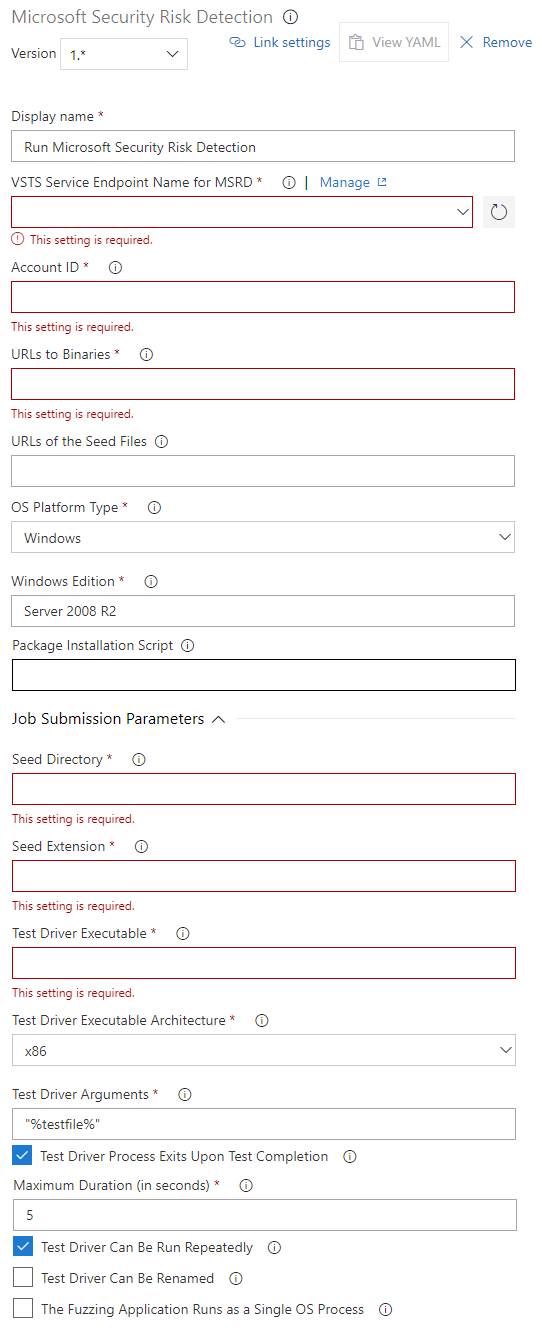

The Microsoft Security Risk Detection Service has been discontinued. The Private Preview for this extension is now closed. Please visit the Microsoft Security Code Analysis Home Page for information about the public MSCA extension and how to get it. You can also contact us via email at Microsoft Security Code Analysis
A build task for Security Risk Detection is now included in the Microsoft Security Code Analysis Extension. This page has the steps needed to configure & run the build task as part of your build pipeline. Click here for information on the Security Risk Detection service.
| 1. | You are using Azure DevOps Services. |
|---|---|
| 2. | The Microsoft Security Code Analysis Extension is installed in your account. |
| 3. | You have created and configured an account with the Risk Detection service. This service requires a separate onboarding process; it is not 'plug-and-play' as most of the other tasks in this extension. Please refer to Microsoft Security Risk Detection and Microsoft Security Risk Detection: How To for instructions. |
| 1. | Open your team project from your Azure DevOps Account. |
|---|---|
| 2. | Navigate to the Build tab under Build and Release |
| 3. | Select the Build Definition into which you wish to add the Risk Detection build task.
|
| 4. | Click + to navigate to the Add Tasks pane. |
| 5. | Find the Risk Detection build task either from the list or using the search box and then click
Add.
|
| 1. | Click the newly added task to see the different options available.

|
|---|---|
| 2. | Enter the required data; each option has hovertext help.
|
The Private Preview for this extension is now closed. Please visit the Microsoft Security Code Analysis Home Page for information about the public MSCA extension and how to get it. You can also contact us via email at Microsoft Security Code Analysis